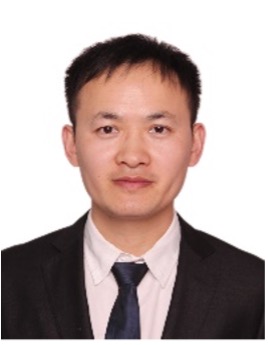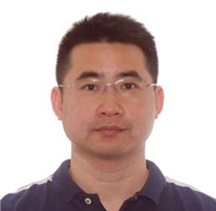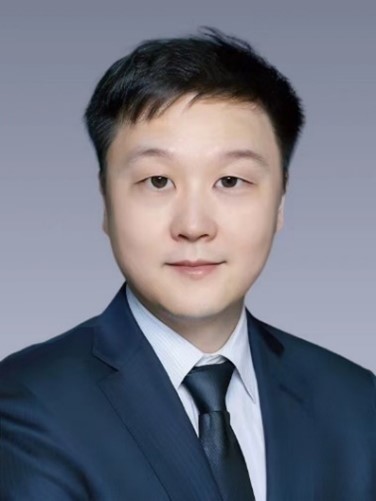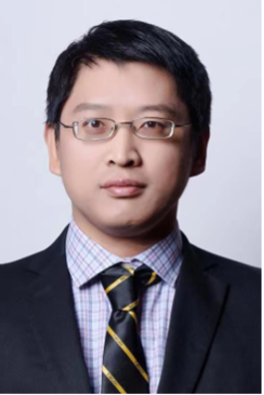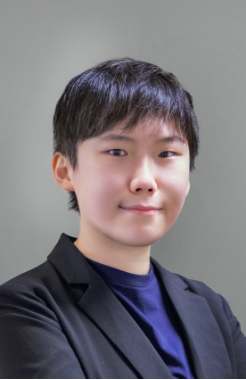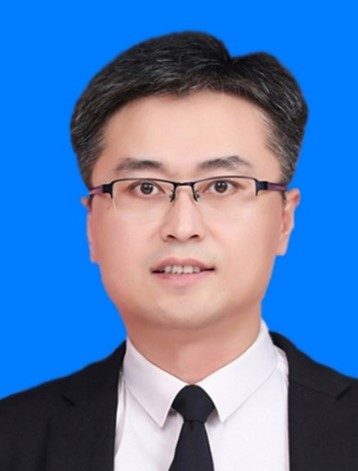Invited Speakers
|
Prof. Zhongchen Cao Tianjin University Development and theoretical analysis of novel surface adaptive polishing process for high-efficiency polishing of optical freeform surface Abstract: Freeform surfaces are gradually used in modern optical systems to simplify structures and enhance their performance. These surfaces are usually fabricated into the nanometric surface finish to ensure the functional properties of the optical system. Although freeform surfaces offer a wide scope of innovation for optical designers, they also present many challenges for optical fabrication, particularly for hard and brittle materials. Polishing of such materials with ultra-precision criteria and low surface/subsurface damage is complex and multiscale in nature because of high brittleness. As a result, this study proposed a novel surface adaptive polishing (SAP) process to efficiently improve the surface accuracy of optical freeform surfaces while suppressing their surface and subsurface damage. The influence of polishing parameters on the surface and subsurface state is studied through a series of experiments to better understand the material removal and damage mechanisms during SAP. A multiscale theoretical model is developed to predict the generation of surface microtopography. This model captures considerable fundamental physics of the SAP process, such as the variable curvature characteristics of the workpiece surface, the surface topography of pad, the brittle-ductile removal effect of materials, and the trochoidal motion trajectories of polishing tool. The simulated results by the theoretical model agree well with the experimental data, and maximum relative errors of material removal rate (MRR) and surface roughness Sa are 3.91 % and 1.38 %, respectively. Results indicated that the SAP process can produce axisymmetric Gaussian removal functions, significantly remove the damage layer, and improve the surface quality while avoiding the generation of periodic surface textures. Biography: Prof. Zhongchen Cao is currently an associate professor at the School of Mechanical Engineering, Tianjin University. He obtained his Doctor of Philosophy degree from The Hong Kong Polytechnic University and then stated his academic career as Research assistant and Post-Doctoral fellow in the Partner State Key Laboratory of Ultra-precision Machining Technology. He is mainly engaged in the basic theory, innovative technology and application research of ultra-precision machining technology and intelligent manufacturing equipment. He has published more than 30 papers related to the ultra-precision polishing technology and won the first prize of Tianjin Technology Invention Award, the first Prize of Technical Invention Award of China Machinery Industry Federation, the second prize of the Military Science and Technology Progress Award. |
|
Prof. Jiang Guo Dalian University of Technology
Advanced Polishing Technologies for Microstructured Surfaces Abstract: Microstructured surfaces have been widely used in the fields of national defense, optics, microfluidics, surface engineering, etc., owing to their unique characteristics and functions compared with traditional surfaces. Currently, for fabricating microfeatures in the size of tens to hundreds of micrometers, precision machining technologies are primarily employed considering machining cost, efficiency and flexibility. However, due to the limitation of the achievable surface quality attributed to defects such as burrs, tool marks and subsurface damages, a post-polishing process is therefore inevitable. To solve the problem that high efficiency, accuracy and surface quality cannot be all taken into account by the present polishing methods, techniques such as dual magnetic roller polishing, localized vibration-assisted magnetic abrasive polishing, and non-contact shape profiling polishing are proposed to achieve ultra-precision conformal polishing of the microstructured surfaces. The profile accuracy maintaining mechanism of the microstructured surface is investigated. At the same time, the removal and suppression mechanism of surface defects is illustrated. Finally, through the practical application of the technology using optimized process parameters, successful applications have been achieved on typical microstructures such as Fresnel lenses, microfluidic and lens array molds, etc. The research achievements will provide technical support for the high-performance manufacturing of precision parts. Biography: Prof. Jiang GUO is currently a professor and doctoral supervisor at the Dalian University of Technology (DUT). He received his Ph.D. from The University of Tokyo in 2013. After graduation, he joined RIKEN as a researcher. In October 2015, he became a scientist at A*STAR (Agency for Science, Technology and Research). He has been actively engaged in developing and applying new optical aspheric and microstructure grinding and polishing processes for over a decade. He has published more than 100 journal papers in the top journals in the fields of manufacturing, optics, precision instrumentation, material processing and electrochemistry. He holds more than 50 international and national invention patents. He presided over 20 projects, such as the Japan Society for the Promotion of Science (JSPS) Youth Fund, the General Program of the National Natural Science Foundation of China, and the National Key Research and Development Program. He has won more than 10 academic awards, such as the Revitalization Award of the Japan Machine Tool Promotion Association and the Outstanding Research Achievement Award of the Chinese Students Association in Japan. He is currently a senior member of the Chinese Mechanical Engineering Society, a member of the European Society for Precision Engineering and Nanotechnology (EUSPEN), the American Society for Precision Engineering (ASPE) and Asian Society for Precision Engineering and Nanotechnology (ASPEN), etc. He is also the reviewer for over 80 SCI journals. |
|
Prof. Lingbao Kong Fudan University
Detection and Characterization of Defects in Additive Manufacturing Abstract: Additive manufacturing has been an enabling process for generating complex components with the advantages of fast prototyping and short product cycling in wide applications. During the additive process such as Selective Laser Melting (SLM), defects exist which will thereafter affect the performance of the final product. The process monitoring for additive manufacturing become critically important to detect such defects and hence provide information for processing diagnosis and parameters optimization. However, due to the complex and severe conditions such as high temperature, glare and dust influence, it is difficult to obtain comprehensive information of the melting areas and related microstructures. Future more, the complicated morphological structures in the surface of additive manufactured parts lead to the difficulties to identify and characterize such defects. There is still a lack of universal standards for the characterization of the defects in SLM parts. To address those problems, this talk will present a monitoring and detection system with multi-sensors with a broad spectrum such as visible light, inferred and polarized spectrum. Optical design of the monitoring system is presented and the simulation performance is evaluated. Different defects in additive manufacturing have been studied and analyzed. A set of characterization parameters for SLM defects was established. The contrast, defect contour information, and high reflection suppression effect of the SLM part defects were analyzed. Comparative analysis was conducted on defect characterization parameters, including geometric and texture parameters. The experimental results demonstrated the effects of the proposed polarization imaging system and verified the feasibility of the defect feature extraction and characterization method. The research work provides an enabling solution for defect detection and helps to establish a universal standard for defect characterization in additive manufacturing. Prospective trend for future studies in multi-sensor and data fusion for additive manufacturing process monitoring is also presented. Biography: Prof L.B. Kong got his BEng and MEng degrees from Harbin Institute of Technology, and PhD degree from The Hong Kong Polytechnic University. Currently he is a full professor and director of Shanghai Engineering Research Center of Ultra-precision Optical Manufacturing of Fudan University. Prof. Kong has been engaged in ultra-precision optical manufacturing and measurement for over twenty years. His research interests include ultra-precision machining technology, intelligent vision measurement, process modeling and optimization, freeform machining and measurement, design and generation of functional structures, multi-spectrum and vision inspection, etc. He has led/participated in a series of national research projects and industrial collaborative projects. He has published over 200 research papers, got over 20 granted patents, and a series of book chapters. As an active researcher, Prof. Kong has received Technology Progress Award from Ministry of Education of China, Faculty Awards for Outstanding Performance/Achievement from The Hong Kong Polytechnic University, Invited Young Researcher from Asia Society for Precision Engineering and Nanotechnology, Joseph Whitworth Prize and A M Strickland Prize from Institution of Mechanical Engineers of UK, Geneva Invention Awards, etc. He is the chairman of Advanced Optical Manufacturing Committee (Young) in COES, the editorial board members of Chinse Journal of Mechanical Engineering and International Journal of Extreme Manufacturing, etc. |
|
Yanjun Lu Shenzhen University Precision Micro-grinding Technology of Microstructured for Hard and brittle materials Abstract: Currently, research on the processing of microstructures on hard and brittle materials is becoming increasingly active. Hard and brittle materials with microstructures, such as ceramics, glass, single crystal silicon carbide, etc., have important applications in many fields. However, current precision machining methods such as laser machining, ion beam machining, and photochemical etching are often difficult to simultaneously guarantee high form accuracy and machining efficiency. Hence, this study proposes V-tip truing as well as dry electrical discharge dressing of coarse diamond grinding wheels for the micro-grinding of microstructures on ceramics and ceramic matrix composites, mold steel and other materials. The effectiveness of precision micro-grinding technology for microstructural machining on hard and brittle materials is verified through several case studies. Applications such as microarray-structural ceramics and ceramic-matrix composites, quartz glass micro channels/micro holes and micro lens structured LED light guide plate mold core, microfluidic chips mold core, have been successfully developed, providing new research ideas and technical references for such type of research. Biography: Dr. Lu Yanjun is currently an Associate Professor at Shenzhen University and serves as the director of the Joint Training Postgraduate Demonstration Base of Guangdong Province. His research interests include dressing and truing of coarse diamond grinding wheel, mirror grinding of carbide alloy and optical glass, micro-array structure grinding machining of glass, ceramics, composites, and its application researches on micro injection molding of LED light guide plate and biomedical microfluidic chip, etc. Until now, he has published more than 25 peer-reviewed papers in top journals, and has been granted more than 20 invention patents (including 2 US patents). He has hosted more than 15 research projects including NSFC (National Natural Science Foundation of China) project and China Postdoctoral Science Foundation and has hosted 5 enterprise projects. |
|
Prof. Min Sangkee University of Wisconsin-Madison
Advancement of Ceramic Machining Abstract: Aluminum oxide ( -Al2O3), with its combined singular chemical and physical material properties, is a multifunctional, high-performance engineering material. Its extreme hardness and scratch resistance are applied in protective cover glasses (watches, mobile phones, lenses, etc.). The high optical transparency, one of the favorable optical properties that sapphire exhibits, is in the range of 200–5000nm for optical devices such as LEDs and projectors. Furthermore, sapphire is suitable for applications in extremely harsh environments owing to its superior chemical and radiation resistance. Moreover, its biocompatibility is highly useful for bio-medical applications. However, the machinability of sapphire is still an issue because of its hardness, brittleness, and crystal anisotropy. For hard–brittle ceramics, the machinability depends on the cutting mode, i.e. the ductile and brittle modes. Ductile regime cutting is associated with crack-free surfaces and low surface roughness, due to plastic flow and chip formation. Plastic deformation is generated by dislocation movement initiated through a slip glide. The brittle mode is dominated by brittle fractures with crack formation and chipping caused by breakages along the cleavage planes. Unlike high-symmetry crystal structures, such as CaF2 or silicon, sapphire does not feature distinct primary and secondary slip systems and has several types of deformation systems (slip and cleavage) because of its low-symmetry hexagonal crystal structure. Twinning is also assumed to be involved in the deformation process of sapphire. A resolved stress model is proposed to understand such a behavior. In this study, plunge-cut tests were conducted to analyze the brittle-ductile transition. The weighted resolved stresses were computed by incorporating critical resolved shear stress (CRSS) and fracture energy. The anisotropic deformation behavior of the machined sapphire was discussed in terms of slip systems, cleavage, and twinning. Biography: Prof. Sangkee earn a Ph.D. at UC Berkeley and then went to Japan as a special professor at Keio University. He returned to the US for a medical venture opportunity. He joined DTL Corporation (DMG Mori’s US R&D) to develop an ultra-precision 5-axis nano machine. He worked for Lawrence Berkeley National Laboratory as a staff scientist. Finally, he is currently working at the Department of Mechanical Engineering at the University of Wisconsin-Madison as an associate professor. |
|
Dr. James K. H. Tsoi The University of Hong Kong Dual anti-bacterial and anti-fungal micro/nano-structures surface for biomaterials Abstract: Surface micro/nano-topography bearing sharp protrusions is a non-chemical solution that is intrinsically stable and long-lasting. Geometrically ordered arrays of micro/nano-tipped spines were reported to repel or rapidly rupture bacteria that come into contact. So far, the killing properties work on cocci and rod-like bacteria, but there is no validation of the efficacy of protrusional surfaces on pathogenic bacteria with different sizes and morphologies. In addition, the scalability is always a problem. In this presentation, synthetic analogue of micro/nano-surface structures that show great effectiveness on species of bacteria and yeast with strongly contrasting shapes and sizes such that selective bacterial control can be achieved that is vital to the clinical success of biomaterial functions. We will demonstrate scalable methods on various biomaterials such as PMMA, titanium and zirconia, and report the efficiency against various bacteria and yeast. As such, these micro/nano-structures are shown to be highly effective, functional and long-lasting that can be clinically applicable as well as general use, for example, in medicine and disease transmission in hospital environments. Biography: Dr James Tsoi is an Associate Professor in Dental Materials Science and Assistant Dean (Innovation) at HKU Faculty of Dentistry. He received BSc in Applied and Analytical Chemistry and PhD in Dental Materials Science, from the University of Hong Kong. He also holds the Memberships of Royal Society of Chemistry (MRSC) and British Computer Society (MBCS), and Fellow in Advanced HE (FHEA). James is actively engaged in a number of research areas including: Dental materials science (mechanical behaviours, surface/bonding and ceramics), biomaterials (scaffold), digital dentistry (CAD/CAM and AI) and dental education (basic science and e-learning). He has authored more than 130 peer-reviewed journal articles, graduated 36 MSc and 11 PhDs, and been awarded 8 times in international conferences since he joined as a HKU Dentistry member in 2012. He is currently serving on the editorial boards of several SCI journals (including Dental Materials), being Vice-President in IADR-Dental Materials Group, Member-at-large in the Academy of Dental Materials, and Hong Kong head-of-delegate in ISO/TC 106 (Dentistry) |
|
Dr. Chunjin Wang The Hong Kong Polytechnic University Magnetic field-assisted batch polishing technology and its applications Abstract: The increasing demand of the superfinished surfaces has stimulated the development and upgrade of the precision polishing technology. However, current ultra-precision polishing methods usually polish the workpiece one-by-one, leading to low production efficiency and high polishing cost. Even though some batch polishing methods have been developed for polishing a number of workpieces simultaneously, it is difficult for them to obtain high form accuracy, as well as nanometre scale surface roughness. Hence, this study presents a novel magnetic field-assisted batch polishing (MABP) method which not only implements nanometre scale batch polishing of freeform surfaces, but also achieves high form maintainability. And the effectiveness of MABP for the high-efficiency polishing of freeform surfaces are validated by several case studies. This study sheds the light for the application of MABP in batch polishing of optical components and moulds, functional structured surfaces, turbine blades, dental crowns, cutting tools, surgical knives, high-end jewelleries, etc. Biography: Dr. Wang Chunjin is currently a Research Assistant Professor in the State Key Laboratory of Ultra-precision Machining Technology (SKL-UMT) of The Hong Kong Polytechnic University. His research mainly focuses on ultra-precision machining technology and instrumentation, especially on ultra-precision polishing technology. He has published more than 70 SCI indexed journal papers. He is a senior member of CSOE, a member of CSME and AET. He also serves as a member of the Advanced Optical Manufacturing Young Expert Committee of the Chinese Society of Optical Engineering, member of the international scientific committee of EUSPEN and ASPEN. |
|
Dr. Sitman Xiewen Wen The Hong Kong Polytechnic University
Nano and micro manufacturing of silica glass Abstract: Silicon and oxygen, the two most abundant elements in the earth's crust, combine to form silicon dioxide, aka. silica, and the invention and use of silica glass has been a part of human history for more than 2,000 years. Today, it is still one of the most widely used materials, from the screens of mobile phones that are touched every day to the optical fibers that span distances. However, due to its mechanical, chemical, and physical stability, fused silica glass is a difficult material to process, and micro- and nanoscale fabrication is even more difficult. In this presentation, we will discuss the team of the reporter's recent innovations in micro- and nanoscale additive manufacturing of quartz glass. Biography: Dr. Wen was educated in Canton and received his bachelor's and master's degrees in physics (optics) from Sun Yat-Sen University before moving to the United States to earn his Ph.D. in Materials Science from Rice University, and he did postdoctoral research works in Argonne National Lab. Dr. Wen’s expertise include Intelligent Additive Manufacturing, Nanomanufacturing, Ultrafast laser manufacturing, Advanced optical metrology, imaging, and spectroscopy Equipment and materials for semiconductor processes. He has published over 30 papers in prestigious journals like Nature Materials, Nature Photonics, Nature Communications, Science Advances, PNAS, etc. |
|
Prof. Jianfeng Xu Huazhong University of Science and Technology
In-situ Field Assisted Ultra-Precision Machining: Theory, Technology and Equipment Abstract: As it is difficult to satisfy the requirements of ultra-high surface quality and accuracy by applying a single type of ultra-precision machining method, an in-situ field-assisted machining technology was proposed for the ultra-precision machining of the difficult-to-cut materials in the aerospace, advanced optics and high-performance ray detection devices. The high-precision energy field control, the material removal and failure mechanism and the high-quality surface forming mechanism were investigated and clarified in the field-assisted ultra-precision machining process. Hence, the arbitrary control of energy morphology, the nano-level material removal and the low damage surface generation are successfully achieved. The hard-brittle single crystal silicon with diameter over 80 mm has been efficiently and accurately fabricated by applying the diamond cutting technology. The profile error, surface roughness and the subsurface damage is less than 0.3μm, 0.5nm and 30nm respectively. Furthermore, with the development of aerospace and national science and technology infrastructure, the multi-field-assisted ultra-precision machining technology is innovatively proposed. Biography: Prof. Jianfeng Xu received the B.S. degree from the School of Mechanical Science and Engineering, Huazhong University of Science and Technology, Wuhan, China, in 2001, and the Ph.D. degree in mechanical engineering from the University of California at San Diego, San Diego, CA, USA, in 2008. He has worked in Western Digital and Applied Materials with engineering position from 2008 to 2012. Since 2012, he has been a Professor with the Mechanical Science and Engineering, Huazhong University of Science and Technology. His research interests include the development of precision machining technology and intelligent manufacturing system. |
|
Dr. Lenny, Wai Sze Yip The Hong Kong Polytechnic University
Magnetic Field Assisted Ultra-Precision Machining for Improving Machinability of Titanium Alloys Abstract: Titanium alloys, widely used in the biomedical industry, pose additional difficulties in Ultra-precision machining ue to their low thermal conductivity and work hardening properties. This study introduces a novel machining technology that incorporates a magnetic field into the UPM process to overcome these challenges. The experimental setup involves superimposing a magnetic field onto titanium alloys during single point diamond turning (SPDT) by positioning them between two permanent magnets. The magnetic field induces an eddy current damping effect and enhances thermal conductivity at the tool/workpiece interface, ultimately minimizing tool wear, material swelling, and improving surface finishing. The research findings contribute to ultimately improving the machining performance of titanium alloys in UPM processes. Biography: Dr Yip Wai Sze is currently a research assistant professor in the Department of Industrial and Systems Engineering of The Hong Kong Polytechnic University. She received Ph.D. degree in ultra-precision machining from The Hong Kong Polytechnic University in 2018. Dr Yip has published in top tier SCI journals such as Energy, Journal of Cleaner Production, Journal of Alloy and Compounds In 2018, one of the papers in Scientific Reports was awarded for top 100 paper in materials science. In 2019, she received the Excellent Thesis Award, 9th Hiwin Doctoral Dissertation by Chinese Mechanical Engineering Society. |
|
Prof. Guoqing Zhang Shenzhen University
Force-based tool setting error identification in single point diamond turning Abstract: In single-point diamond turning, tool setting error usually produces cylindrical or conical residual at the workpiece center when tool feeds from the edge to center of the workpiece, which greatly affects the form accuracy of the machined products and the optical performance it carries. The traditional methods of tool setting error compensation most employ off-line measurement methods, in which the machining continuity is disrupted. In the present study, based on the relative motion between cutting tool and workpiece during the tool feeding, a mathematical model of the tool interference zone was established. By following, a novel force-based tool center error identification method in SPDT is introduced. First, according to the relative position between the tool and workpiece center, the tool setting error is classified into nine cases. The relation between the cutting force profiles and the tool setting error is analyzed for each case. Then, a numerical fitting model and a geometric model are established to identify tool-above-center and tool-below-center errors, respectively. Additionally, a geometric model is established to calculate the normal distance from the tool interference/exit cutting to the workpiece center, which serves as a reference for the horizontal tool setting error identification. Finally, the on-line identification results of the tool center error are verified by experiments. Theoretical and experimental results show that the proposed on-line tool setting error identification method is effective and accurate, which greatly improves the cutting efficiency in SPDT. This method can also facilitate the automation and intelligence of single point diamond machining processes. Biography: Guoqing Zhang, Research Professor at Shenzhen University, China, He received his bachelor's degree in mechanical engineering from Northeast Petroleum University, China in 2005. In 2009, he received his master’s degree in mechanical engineering from Harbin Institute of Technology, China. And he received his Ph.D degree from The Hong Kong Polytechnic University in 2014. Now, he has selected as a Shenzhen Peacock Program for Overseas/Professional High-Level Talents. He is serving as a Deputy Director of Guangdong Key Laboratory of Electromagnetic Control and Intelligent Robots, a Deputy Director of Shenzhen Key Laboratory of High Performance Nontraditional Manufacturing, a Committee member of Chinese Mechanical Engineering Society Design Branch and a Member of Advanced Optical Manufacturing Young Expert Committee of Chinese Optical Engineering Society. His research interest include ultra-precision machining technology and equipment, robots and intelligent equipment etc.. Until now, he has hosted more than 10 research projects including 4 NSFC (National Natural Science Foundation of China) projects, published more than 100 peer-reviewed papers and been granted 14 US patents and 34 CN patents. Edited 2 books and co-edited 2 ones. He is now served as an academic editor for the international journal “Shock and Vibration” and reviewers for more than 10 international journals. He has won more than 5 prizes includes the China Industry-University-Research Cooperation Promotion Award (individual) and the second prize of innovation achievement. |
|
Dr. Zejia Zhao Shenzhen University
Material micro/nanostructure concerns in ultraprecision machining of titanium alloys Abstract: Titanium alloys have been widely used in automotive, aerial and biomedical industries due to their superior mechanical properties and exceptional biocompatibility. To date, there are still great challenges in machining of titanium alloys due to the poor thermal conductivity and low modulus of elasticity. Many efforts have been devoted to improving the machinability of the titanium alloys such as optimizing cutting parameters, using cooling-lubrication techniques, or adopting some assisted cutting strategies. However, little research was conducted to clearly understand the effects of material micro/nanostructures on the ultraprecision machining of titanium alloys. In this work, the titanium micro/nanostructures including grain sizes and phase compositions are considered in the ultraprecision machining. Results indicate that a grain size reduction contributes to a high surface quality because of the inhibition of crack nucleation and propagation in machining the titanium with a small grain size. Besides, α phase and β phase compositions also affect the machinability of titanium alloys since they could highly influence the stress required to overcome material deformation in the machining. This work is to provide valuable guidance for ultraprecision machining of polycrystalline and multiphase materials. Biography: Dr. Zejia Zhao is currently an assistant professor in the College of Mechatronics and Control Engineering at Shenzhen University. He achieved his Ph.D. degree at The Hong Kong Polytechnic University in 2019. He has been selected for the Shenzhen Peacock Program for Overseas/Professional High-Level Talents. His research interests mainly include ultra-precision machining of difficult-to-cut materials and semiconductor manufacturing. In the past 5 years, he has published more than 30 peer-reviewed papers and one co-edited book; he has also taken charge of 7 projects as a principal investigator. Dr. Zhao is also a member of the Advanced Optical Manufacturing Youth Expert Committee, a member of the Mechanical Engineering Society of Guang Dong Province. |



